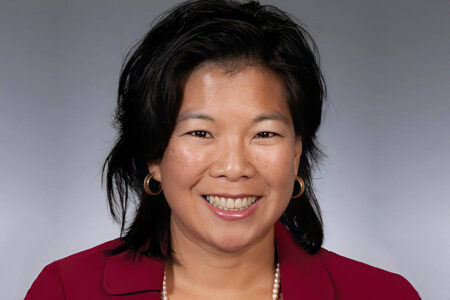The Federal Reserve loomed large over the FILS conference last week. Any discussions about the difference a trading desk can make had to clearly framed within a dangerously bearish and volatile market. Inflation and the unwinding of the balance sheet presented an elephant in the room.

Robin Foley, CIO Fixed Income, Fidelity Investments, giving her personal views, noted, “We are mosaic theorists, we like to put our arms around everything. Inflation is that key issue that nobody really wanted to talk about.”
That was likely to continue she noted, with the US central bank in a thankless position and making missteps.
“The Fed sees that continued pressure on energy, on food, that is inflicting real pain on people,” she said. “We’ve gone from a situation where the Fed were first saying ‘Oh, it’s temporary’. Oh, no, it’s not temporary.”
Chair Zack Ellison, managing partner and CIO, ARI Debt Ventures Fund, asked what the other major risks were, and Nancy Davis, managing partner and CIO at Quadratic Capital Management, said, “I think the biggest risk is the embedded short convexity, which is a nice way of saying short volatility exposure in fixed income portfolios.”
Addressing the challenges this potentially creates for chief investment officers (CIOs), Davis observed, “If you break it down, there’s rate risk, and then there’s spread risk. I think the problem is, a lot of short duration managers have moved down the credit spectrum. And they tend to not have a lot of rate risks, but they have a lot of spread risk, especially with structured credit. So just be very careful with the Fed, unwinding its balance sheet, because if you look at the SOMA holdings, which is what the Fed actually bought in the open market, the SOMA holdings are very geared towards mortgages.”
“I agree that the asset class both treasuries and agency mortgages are incredibly overbought with a $9 trillion Fed balance sheet, full up,” said Foley. “But in terms of the quantitative tightening and the unwind of the balance sheet, agency mortgages, you’re capping US$17.5 billion per month for the next three months. [The Fed] is going to take maybe 5% off of their agency mortgage balance sheet, by the end of the year. It’s going to take a long, long time.”
Awareness of the 2008 crisis was informing central bank thinking, she said, and that at least gave some possible comfort to mortgage market participants.
“There is a reason why they have been so circumspect about their language, it is entirely absent in their statements, coming out of the meetings about what they’re going to do with those mortgages, because they understand that there’s a very high degree of fragility there,” she said.
©Markets Media Europe 2025


























